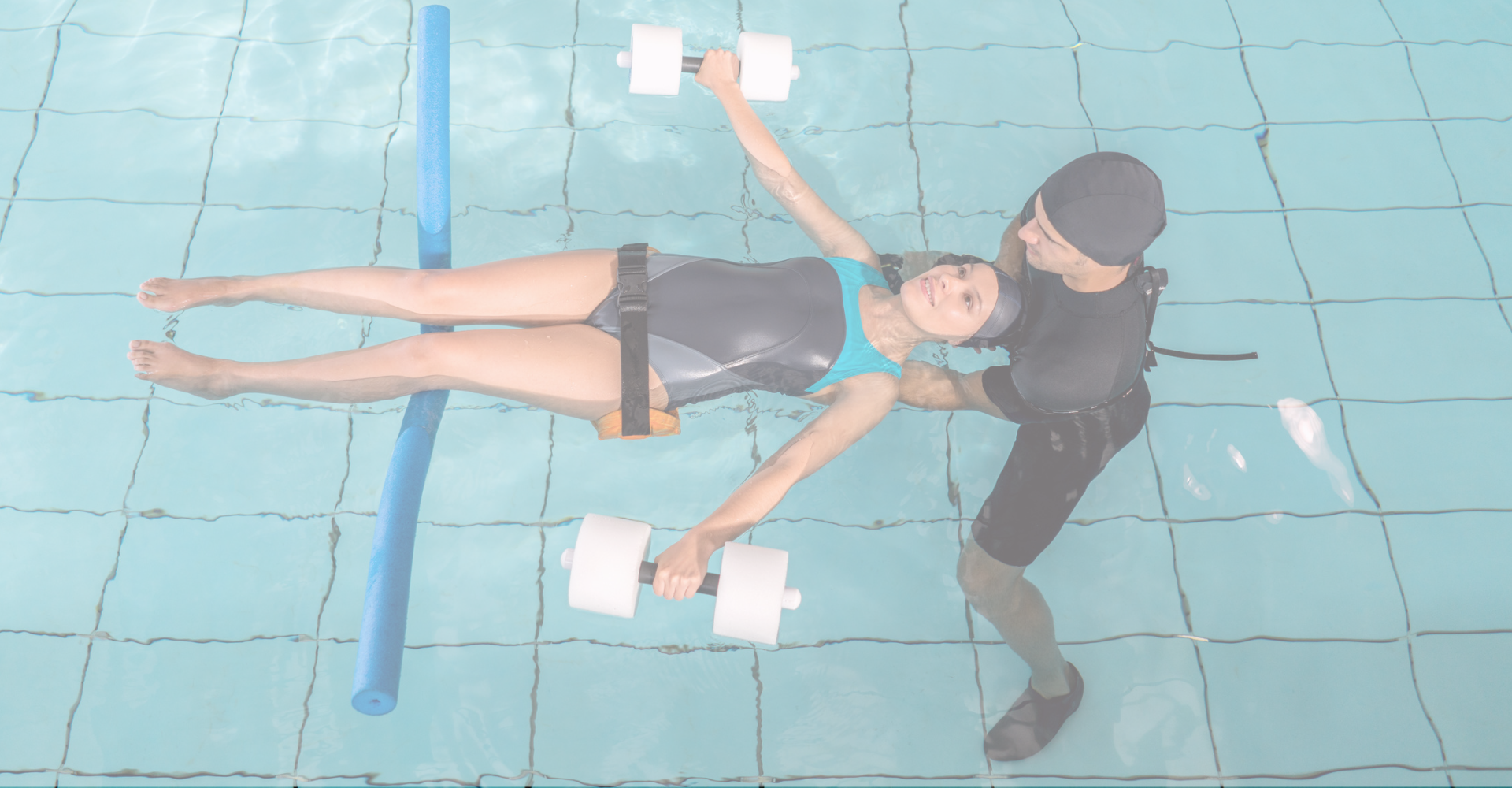
Hydrotherapy
Independence through movement
Hydrotherapy can provide a critical part of the allied health supports you receive to help you stay happy and healthy for those living with a range of physical and cognitive disabilities.
Hydrotherapy is a type of physical therapy used to treat and manage various health related conditions via the engagement of various stretches, exercises, cardiovascular activities, muscle and joint relaxation techniques in a warm water pool.
Hydrotherapy is provided at several designated locations around your local community in a speciality-built facility with heated water at approx. 33-36 degrees Celsius.
What is hydrotherapy?
Hydrotherapy is a unique way of exercising the body in a low stress, low impact, self-regulating environment. Hydrotherapy can be less stressful for joints, bones and muscles as the water provides resistance in all directions without having direct impact with the ground. The effects of warm water provide a circulation boost through hydrostatic pressure, increase in metabolic rate to help burn more energy and a relaxation effect on muscles and the nervous system.
The pool is regulated to a warm temperature of around 32-34 degrees. The additional benefits include; increase in circulation, relaxation of muscles and decrease in swelling, reduced muscle spasms, and reduce or remove pain, including arthritis pain.
Hydrotherapy is ideal for participants with a disability who may be limited with mobility or movement in some or all parts of their body, or who have recently been cleared to return to exercise post-surgery.
Hydrotherapy is often used by people with cerebral palsy as it can improve muscle strength whilst allowing freedom of movement, although the benefits of Hydrotherapy are not limited to people with specific neurological conditions.
Benefits of hydrotherapy:
Improving gross motor skills such as strength, balance and coordination
Improving fine motor skills such as grip, hand and finger strength
Improving range of motion in joints
Increasing aerobic capacity
Improving blood circulation and swelling reduction
Increasing cardiovascular load and tolerance
Temporarily reducing neural tone and spasticity
Low, Moderate or high intensity exercising without reduced pain or restricted movement
Improving posture
Benefits of hydrotherapy go beyond the physical activity
If your disability impacts your physical and mental health than engaging in hydrotherapy can be liberating, improve your mood and overall health and wellbeing and increase your quality of life.
Some other benefits of hydrotherapy include:
Strength training
Gait retraining
Balance exercises
Falls prevention
Assistive technology prescription
Weight management
Coordination for the upper limb including throwing, catching, hitting, holding and releasing
Coordination for the lower limb including walking, running, jumping, steps and stairs
Functional activity practice including sit to stand, showering, dressing, toileting, vehicle navigation
Hydrotherapy Supports
-
Participants with a physical and/or cognitive disability can participate in Hydrotherapy.
In order to safely participate in Hydrotherapy, the treating clinician will need to assess if the individual and their supports are appropriate for Hydrotherapy. Things requiring consideration include:
Ability to follow instructions / lead from therapist
Compliance with wound care / management
Continence management
Behaviours of concern
Anxiety or fears of water
Participants requiring use of a powered hoist, wheelchair, slide board or other mobility devices can be accommodated with hydrotherapy with a treating therapist
-
There are many types and variations of exercises that a therapist may choose to complete during a session including:
Gentle movements - Walking, side stepping, marching, backwards walking
Balance - Including single leg balance, noodle balance
Cardiovascular – Including swimming, cycling, arm pumps
Limb mobility – Shoulder, wrist, hip and knee circles and bending
Spinal mobility – Neck, thoracic and lumbar twisting and bending
Relaxing – Floating, full body extension, spinal twisting
Functional movements – Squats, step ups, pushing and pulling, lifting, holding
Strengthening – bicep's, triceps, quads, glutes, calves using dumbbells, floats and resistance paddles
Water submersion – Picking up obstacles or targets under water
-
Initially the treating therapist may trial water immersion, tolerance to gentle activity and compliance with following instructions and therapist's lead. For some, we may need to start by visiting the pool and watching others participate before we can introduce getting into the pool. For others we can establish a prefilled exercise sheet that we can get straight into completing as a part of a short-term rehab journey.
-
What's the difference between hydrotherapy with a therapist compared to going into the pool on your own or with a support worker? For some this question can be the same as going to the gym. For some people they are knowledgeable and experienced about anatomy, physiology, the types of exercises, what the machines can do and how to use them safely, for others, they require the guidance of a personal trainer or fitness coach.
With Hydrotherapy, the therapist is able to assess the right level for each individual to ensure the session is safe and effective in directly achieving your goals. This may lead to a level of independence over time, similar to how a personal trainer may at some point instruct you to start going to the gym on your own and using them as a check in point on a semi-regular basis.
-
Some of the public access pools include:
Maribyrnong Aquatic Centre
Ascot Vale Leisure Centre
Hawthorne Aquatic and Leisure Centre
Reservoir Leisure Centre
Coburg Leisure Centre
Brunswick Baths Leisure Centre
Keilor East Leisure Centre
St Albans Leisure Centre
-
Casual access to public pools is approximately $5 - $8 dollars for the participant. Those with Support Workers are with a carers card can access for free when supporting a participant.
Access to facilities such as pool’s and gyms are generally not covered through NDIS funding unless prior approval is arranged.


